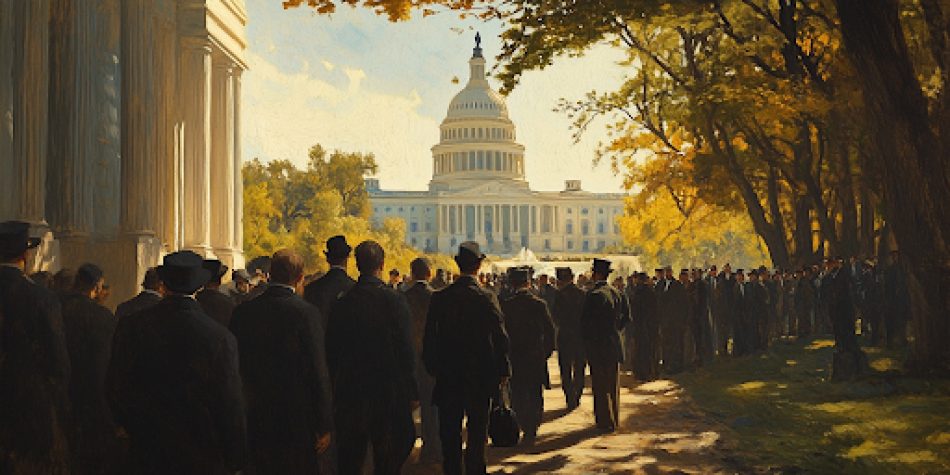On July 4, 2023, just over a year ago, I wrote about what I learned about the Constitution while studying to become a U.S. citizen. Over a dozen of my friends who read that article asked all sorts of questions on how the Fourteenth Amendment allowed the Federal government, not state governments, to become the trustworthy guardians of the First Amendment’s freedoms. This is what they found most interesting and novel.
To this end, what I found profound when I studied the history of this great country is that few Americans understood how the Thirteenth, Fourteenth, and Fifteenth Amendments radically changed the Constitution, augmented the need for compromise, and safeguarded the Bill of Rights. Iowa, where I have lived for 20-plus years, like the state of Utah (where I lived from 1991 – 1998), is politically conservative and are both advocates of state rights over Federal rights. Many people in Utah and Iowa believe in originalism that the U.S. Constitution should be interpreted as it was understood at its adoption—written in 1787 and ratified in 1788. It is a belief in the original Constitution that State rights eclipse federal rights. The Thirteenth, Fourteenth, and Fifteenth Amendments radically changed the Constitution.
In the past year, I have spent more time learning about the social context that gave birth to these three amendments by reading Eric Foner’s books The Second Founding: How the Civil War and Reconstruction Remade the Constitution and Reconstruction: America’s Unfinished Revolution, 1863-1877. Dr. Foner is DeWitt Clinton Professor Emeritus of History affiliated with Columbia University, whose academic work specializes in the Civil War and Reconstruction, slavery, and 19th-century America.
Learning more about the historical context of these three amendments made me realize that compromise is the psychological soul of the Constitution and how vital it is for healthy interactions, including healthy disagreements, between the Federal government and State governments. As Dr. Foner explains, the Thirteenth, Fourteenth, and Fifteenth Amendments lessened state rights and gave prominence to Federal rights.
After the Civil War, the Wade-Davis Bill (1864) created a framework for Reconstruction and the re-admittance of the Confederate States to the Union, and most Confederate leaders were able to return home. Lincoln, his cabinet, and Congress knew that if states still held greater power than the federal government, Confederate states would go back to having black slaves. The creation of these three amendments allowed black people to have rights and allowed the Bill of Rights to flourish, thus making democracy genuinely blossom. Dr. Forner, in The Second Founding, states
. . . the application of the Bill of Rights to the States has come via the Fourteenth Amendment’s Due Process Clause . . . Thanks to incorporation, the states are now required to act in accordance with the fundamental liberties enumerated in the Bill of Rights, tremendously expanding the ability for all Americans to protect their civil liberties against abridgment by state and local authorities.
Akhil Amar, one of the most cited constitutional scholars from Yale Law School, clearly pinpoints in his 2021 book The Words That Made Us, and perhaps more so in his 1998 book The Bill of Rights, that the federal government became more trustworthy guardians of the first amendment freedoms than state government during the reconstruction period in American history. As Dr. Amar adds, immediately after ratifying the Fourteenth and Fifteenth Amendments, the federal government initiated civil rights legislation banning segregation in public places, including within state governments, that still perpetuated the beliefs that African Americans were less-than-human slaves. It seems like the federal government is often viewed as the “bad guy.”
While there are many examples of the federal government doing harm, the creation of the Thirteenth, Fourteenth, and Fifteenth Amendments exemplify some of the good work it has done in protecting civil liberties. Certainly, in preventing Confederate states from continuing slavery, the federal government protected fundamental rights much better than certain States.
What makes the U.S. Constitution so amazing is that it permits freedom of viewpoint, negotiation, and cognitive elasticity, which gives breath to creativity. This includes the interplay between state and federal governments, and good public policy can emerge when a middle ground is found. Our mentality judging between state and federal governments does not have to be an “us” versus “them” mentality. Just as there can be harm in both, there can also be good in both the federal and state governments, and good things can happen when they set aside differences and work together.
















